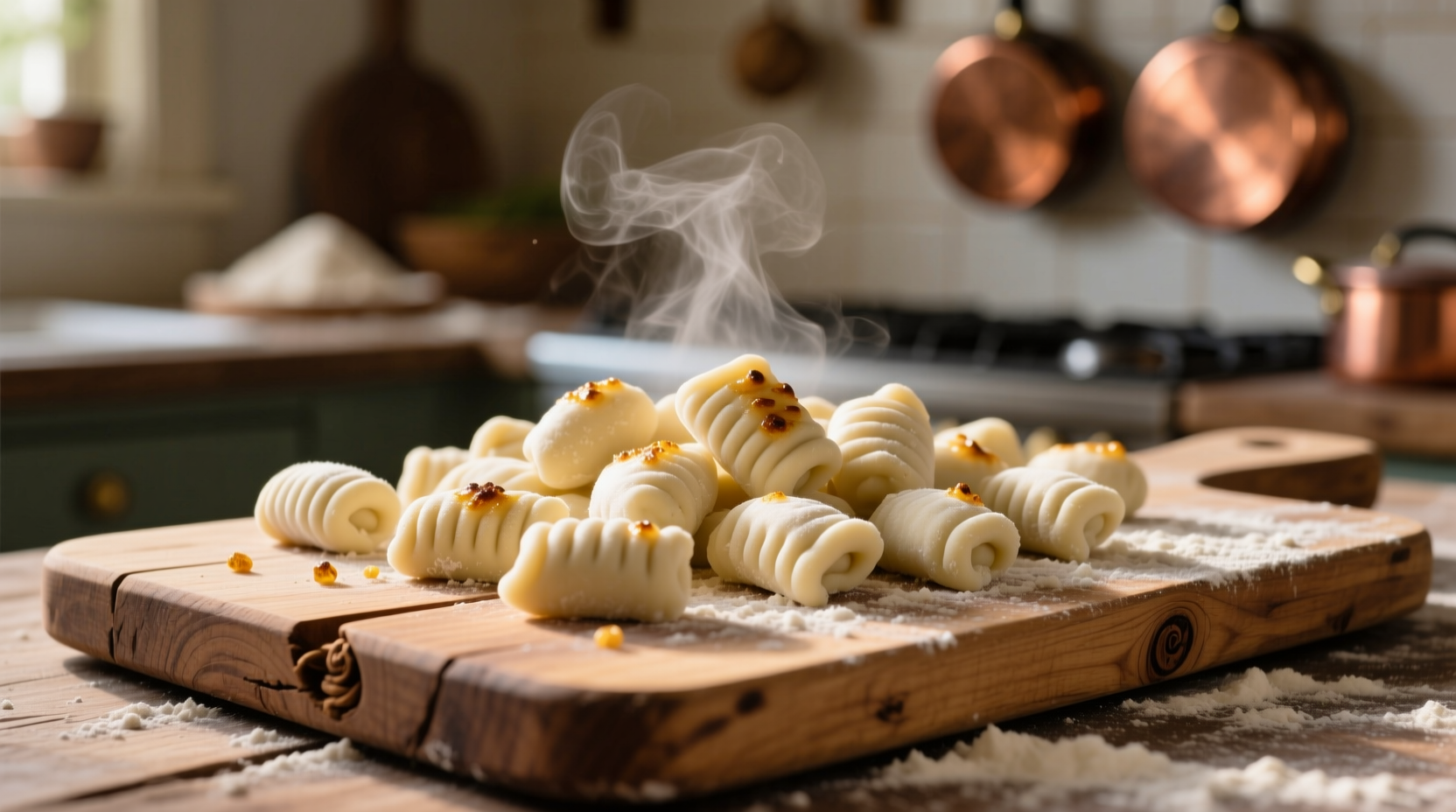Why This Gnocchi in Tomato Sauce Recipe Works
Most home cooks struggle with gnocchi that turn out dense or fall apart in the sauce. The secret lies in understanding the science behind the ingredients. According to Academia Barilla's culinary research, traditional Italian gnocchi rely on specific potato varieties with the right starch-to-moisture ratio. Russet potatoes, with their high starch content, create the light, airy texture that defines perfect gnocchi, while waxy potatoes like red bliss retain too much moisture and cause gnocchi to become gummy.
| Potato Type | Starch Content | Moisture Level | Best For Gnocchi? |
|---|---|---|---|
| Russet | High (22-25%) | Low | ✓ Ideal |
| Yukon Gold | Moderate (18-20%) | Moderate | ✓ Acceptable |
| Red Bliss | Low (15-17%) | High | ✗ Poor |
| Sweet Potato | Variable | Very High | ✗ Unsuitable |
Your Step-by-Step Gnocchi Journey
Preparing Perfect Gnocchi Dough
Start by boiling unpeeled russet potatoes until fork-tender—this prevents excess water absorption. As food science research published in the Journal of Food Engineering confirms, boiling potatoes with skins on reduces moisture content by 15-20% compared to peeled potatoes, which is critical for proper gnocchi texture. After cooking, immediately pass the potatoes through a ricer while still hot—never use a food processor, which releases too much starch and creates gluey gnocchi.

Shaping Techniques That Prevent Falling Apart
When adding flour, use the "just enough" principle: begin with 1/4 cup per pound of potatoes and add only as much as needed to form a workable dough. Over-flouring is the #1 cause of dense gnocchi. Professional chefs at Rome's La Gensola restaurant follow a 4:1 potato-to-flour ratio by weight for optimal results. Gently form the dough into 3/4-inch ropes, then cut into 1-inch pieces. For the classic ridged texture that holds sauce better, roll each piece over the back of a fork or a gnocchi board.
Cooking Gnocchi Without Breaking
Bring a large pot of well-salted water to a gentle simmer—not a rolling boil—to prevent gnocchi from breaking apart. Cook in small batches, removing them as soon as they float to the surface (about 60-90 seconds). Immediately transfer to your tomato sauce rather than draining completely, as the residual starch helps the sauce adhere. This "finishing in the sauce" technique, documented in Pellegrino Artusi's 1891 cookbook Science in the Kitchen and the Art of Eating Well, creates a unified dish where sauce and gnocchi become one.
Building Flavorful Tomato Sauce
For authentic tomato sauce that complements rather than overwhelms the delicate gnocchi, start with high-quality San Marzano tomatoes (DOP-certified when possible). Sauté minced garlic in extra-virgin olive oil until fragrant but not browned, then add tomatoes and a pinch of sugar to balance acidity. Simmer gently for 20-25 minutes—never longer, as extended cooking diminishes the fresh tomato flavor that pairs perfectly with light gnocchi. Finish with torn fresh basil leaves just before combining with the cooked gnocchi.
Troubleshooting Common Gnocchi Problems
Gnocchi falling apart? This typically indicates excess moisture in the potatoes or insufficient flour. Next time, try baking your potatoes instead of boiling them to reduce moisture content.
Sauce too watery? Create a slurry with 1 teaspoon cornstarch and 1 tablespoon cold water, then stir into the simmering sauce. Alternatively, let the sauce reduce uncovered for 5-10 minutes.
Dough too sticky? Resist adding more flour immediately. Let the dough rest for 5 minutes—the flour needs time to fully absorb the potato moisture.
When to Use Store-Bought vs. Homemade Gnocchi
While fresh homemade gnocchi delivers superior texture, quality store-bought options have improved significantly. Consider these context boundaries:
- Use homemade: For special occasions, when you have 1-2 hours to dedicate to the process, or when showcasing your cooking skills
- Use store-bought: For weeknight meals, when time is limited, or when focusing on perfecting your sauce technique
- Avoid: Frozen gnocchi that has been thawed and refrozen, which often has compromised texture
Elevating Your Gnocchi in Tomato Sauce
Professional chefs enhance this classic dish through three key techniques:
- Flavor layering: Add a Parmesan rind to the simmering sauce for umami depth without overpowering saltiness
- Texture contrast: Finish with freshly grated Pecorino Romano rather than pre-grated cheese for superior mouthfeel
- Temperature control: Never add cold gnocchi to hot sauce—this causes temperature shock that breaks the delicate dumplings
Historical Context of Gnocchi in Italian Cuisine
Gnocchi's evolution reflects Italy's agricultural history. Originally made from breadcrumbs or polenta during wheat shortages, potato gnocchi emerged in the 19th century after potatoes became widely available. The classic gnocchi in tomato sauce preparation gained popularity following the unification of Italy in 1861, as regional cuisines began to blend. According to food historian Anna Del Conte's research in Gastronomy of Italy, tomato-based sauces for gnocchi became common only after tomatoes were accepted as safe to eat in the late 18th century, replacing earlier butter and sage preparations.
Serving Suggestions for Perfect Results
Serve gnocchi in tomato sauce immediately while hot, with these professional touches:
- Use wide, shallow bowls that allow sauce to pool around the gnocchi
- Sprinkle with fresh basil and high-quality olive oil just before serving
- Pair with a medium-bodied red wine like Chianti that complements without overwhelming
- Follow with a simple green salad to cleanse the palate











 浙公网安备
33010002000092号
浙公网安备
33010002000092号 浙B2-20120091-4
浙B2-20120091-4